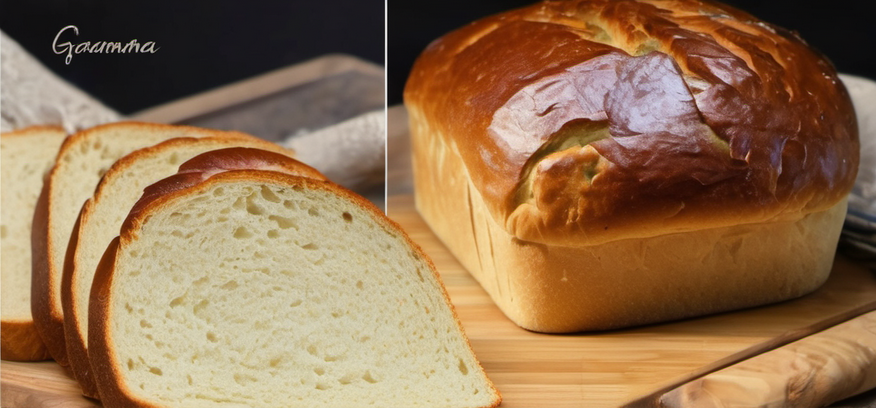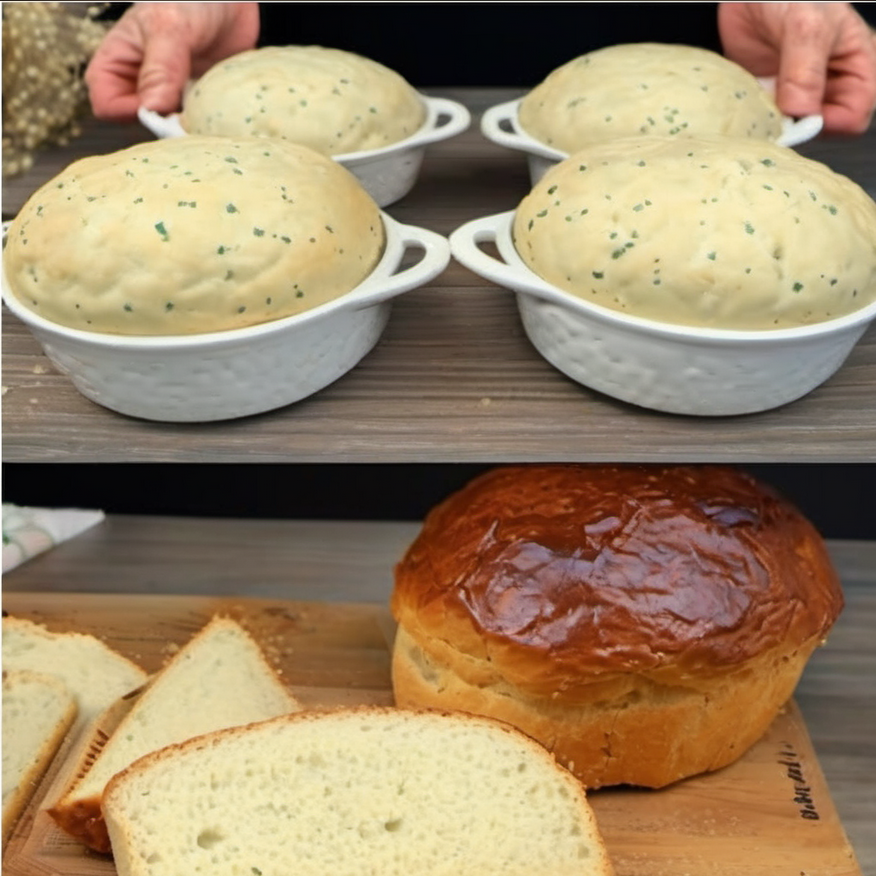WANT TO SAVE THIS RECIPE ?
Grandma's Secret Bread Recipe : The Magic Touch of Vinegar
Discover the charm of homemade bread with a twist in Grandma's Secret Bread Recipe, enhanced by a touch of vinegar. This recipe has been cherished and passed down through generations, proving that sometimes, the simplest addition can transform the ordinary into extraordinary. Here's how you can make a loaf that's soft, fluffy, and delightfully crusty using this timeless recipe.
Ingredients:
- 470-500 grams of all-purpose wheat flour
- 5 grams of dry yeast
- 2 tablespoons of sugar
- 2 tablespoons of poppy seeds
- 1 teaspoon of baking soda
- 1 milliliter of vinegar
- 1 egg
- 25 milliliters of vegetable oil
- ½ teaspoon of salt
- 200 milliliters of warm milk
- 50 grams of soft butter

>
Instructions:
- Activate the Yeast:
- Combine the dry yeast with 50 milliliters of warm milk in a small bowl. Add a teaspoon of sugar. Allow it to sit for about 10 minutes until it foams, indicating that the yeast is active.
- Mix Dry Ingredients:
- In a large bowl, combine the flour, remaining sugar, salt, baking soda, and poppy seeds. Mix well to distribute the ingredients evenly.
- Prepare Wet Ingredients:
- In another bowl, whisk the egg, add the remaining warm milk, melted butter, and vegetable oil. Stir these wet ingredients until thoroughly combined.
- Combine Wet and Dry Mixtures:
- Pour the foamy yeast mixture and the wet ingredient mix into the bowl with the dry ingredients. Stir until you form a soft, slightly sticky dough.
- Knead the Dough:
- Transfer the dough to a floured surface and knead for about 10 minutes, or until smooth and elastic. You may need to add a bit more flour if the dough is too sticky.
- First Rise:
- Place the dough in a greased bowl, cover with a clean towel, and let it rise in a warm place for about an hour, or until it doubles in size.
- Shape and Second Rise:
- After the first rise, punch down the dough to release any air bubbles. Divide the dough into two halves, form each into a loaf, and place into greased loaf pans.
- Bake:
- Preheat your oven to 350°F (180°C). Brush the tops of the loaves with milk or an egg wash for a shiny crust. Bake for 25-30 minutes, or until the bread is golden brown and sounds hollow when tapped.
- Cool and Serve:
- Allow the bread to cool slightly before removing from the pans. Serve warm with butter or your choice of spread.
Why Adding Vinegar Works Wonders:
- Enhances Texture: Vinegar strengthens the dough, improving the bread's texture, making it softer and more uniform.
- Balances Flavor: The mild acidity of vinegar subtly enhances the flavors without overwhelming the bread with sourness.
- Boosts Rising: Vinegar reacts with baking soda to produce carbon dioxide, aiding in the rise and resulting in a lighter, airier bread.
Tips for Perfect Bread:
- Ensure Fresh Yeast: Use fresh, active yeast for the best rise. If the yeast doesn't foam, it may be expired.
- Accurate Measurements: Precisely measure your ingredients, especially the flour, to avoid overly dense dough.
- Proper Kneading: Adequate kneading develops gluten, essential for the bread's texture. Knead until the dough is smooth and elastic.
Serving Suggestions:
- Butter It Up: There's nothing like fresh bread with butter. Serve warm for a comforting treat.
- Versatile Use: This bread is perfect for sandwiches or as a side to any meal.
- With Soup: Pair it with your favorite soup for a satisfying meal.
This bread recipe with vinegar not only brings a unique twist to traditional homemade bread but also taps into the nostalgia of recipes passed down through families. Give it a try and see why this simple addition makes such a significant difference!
